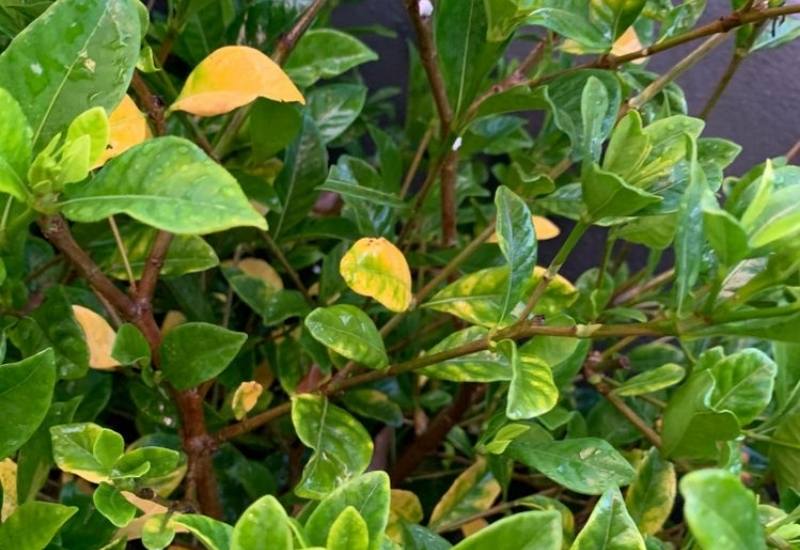
Gardenia leaves turning yellow can ruin the look of your shrub, and the fear of losing your shrub is understandable. Rest assured, though, that there are few problems evidenced by yellow leaves that can indicate serious health problems.
In fact gardenias are notoriously hard to grow and delicate. But what causes leaves on your gardenia turn yellow and how to fix the problem?
Yellowing of gardenia leaves can be a sign of many different problems, from wrong soil pH to excessive moisture in the soil to drought stress. But wait, don’t panic! If your gardenia leaves are turning yellow, quickly analyze the symptoms and apply the correct solution and your prized shrub will turn its leaves back to that splendid deep green and healthy color..
Read on to find what can cause yellowing gardenia leaves, how to recognize and identify the issue behind foliage discoloring.
General Guidelines For Growing Gardenias
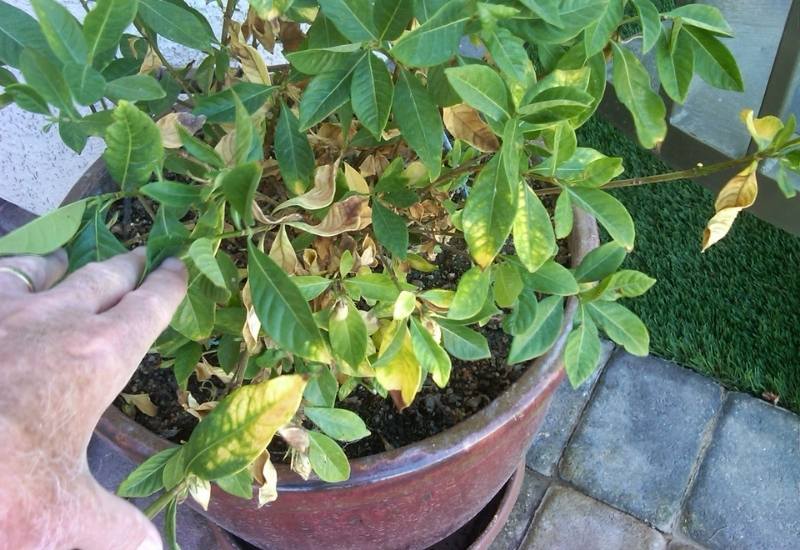
First, let’s check if you are doing everything right with your gardenia; it’s a very demanding but beautiful shrub, so, any mistake with its maintenance or even positioning can cause leaf yellowing and other problems, including the death of your green friend.
Gardenias Need Mild to Warm Climate
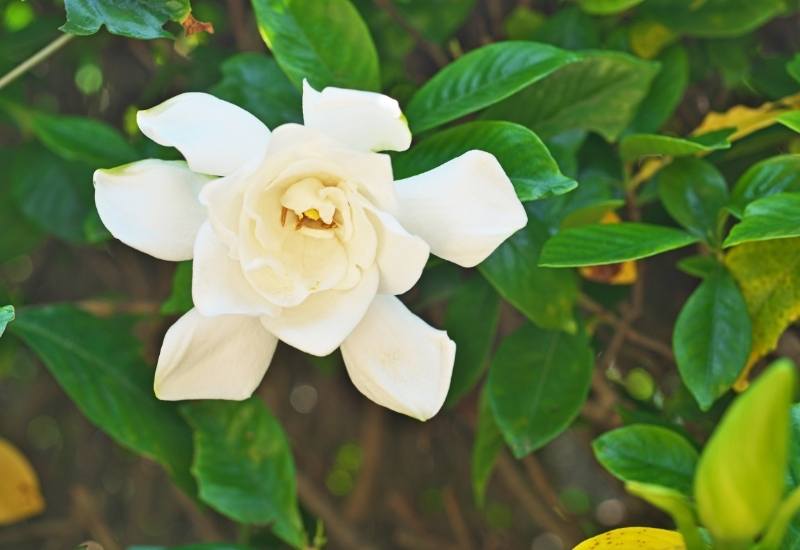
You can grow gardenias in USDA zones 6 to 11. They do not tolerate cold climates, because they come from areas of Asia like Vietnam, Southern China, Korea, Taiwan, India, Myanmar, Bangladesh and some mild areas of Japan.
Cold winters can spell disaster with your gardenia; you may even lose it if the temperature drops too much.
It is heat tolerant, to zones 7 to 12 but in hotter regions you will do better planting it in partial shade… Talking about which.
Gardenias Need Fairly Good Sunlight Conditions
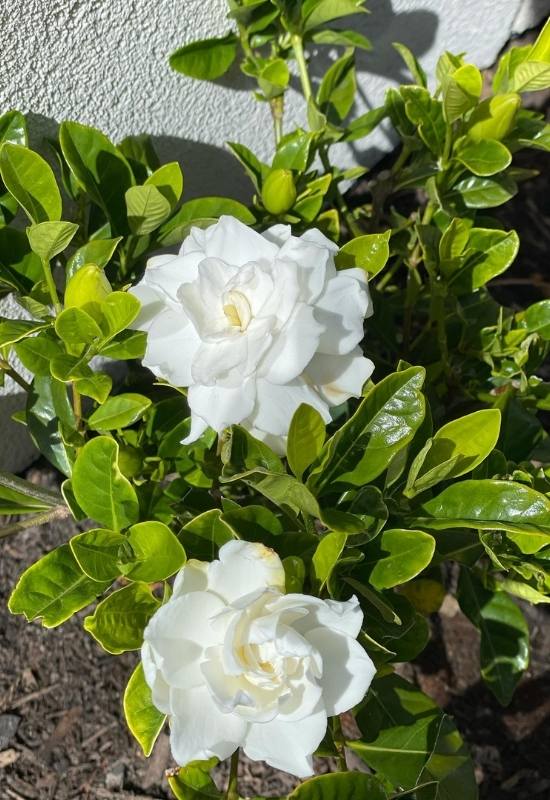
A gardenia shrub will grow well in full Sun, dappled shade, light shade or partial shade.
In less warm areas, like USDA zones 7 and 8, it will do well in full Sun, while towards 10 to 12 a part shade position is ideal.
If light is too low, your plant will suffer severely. The ideal position for a gardenia is facing east and north (or east and south in the Southern Hemisphere).
This can be really important for the success of your efforts, especially hot areas. This will avoid the strongest and hottest light of the day, as it may burn its leaves; but still give it plenty of brightness in the morning.
If you grow your gardenia indoors, place it in a bright but indirect light position, with at leas 5 hours of light a day, from a west facing window.
However, gardenias are not “indoor plants”, they prefer outdoor conditions. If you have a gardenia at home, it is more prone to catching disease and poor blossoming.
Gardenias Need Fertile Soil
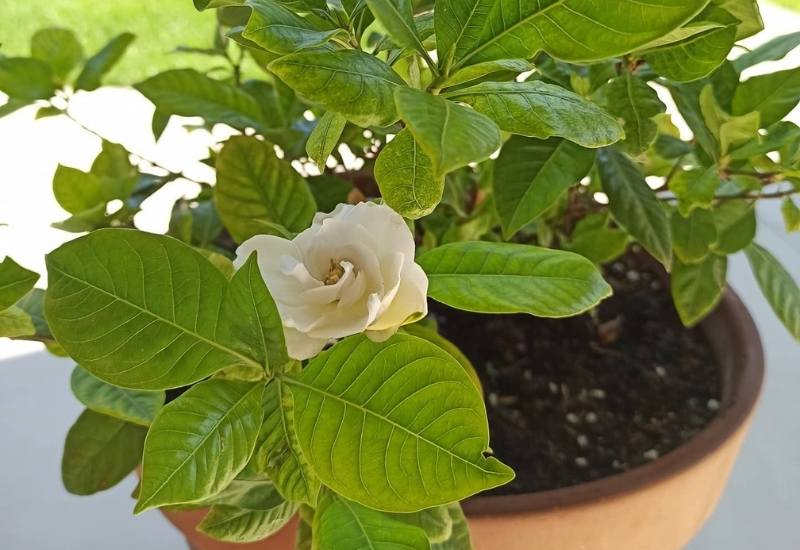
If the soil is poor, your gardenia will suffer! You won’t get many flowers – if at all – its growth will be stunted and leaves will get all sorts of problems.
This plant needs organically rich loam, clay or sand based soil; if it is chalk based, it will simply die shortly, unless you improve it.
What is more, soil needs excellent drainage. Add lots of sand, small gravel and other similar material if your soil is tough.
Its roots are quite delicate, it just cannot get through compacted soil. You can help preserve organic matter and humidity by mulching around the base of the shrub.
Do not leave the soil bare, it will soon compact or become too sandy, depending on its composition, and it will lose lots of nutrients and fast.
And in fact…
Gardenias Need Constantly Humid Soil
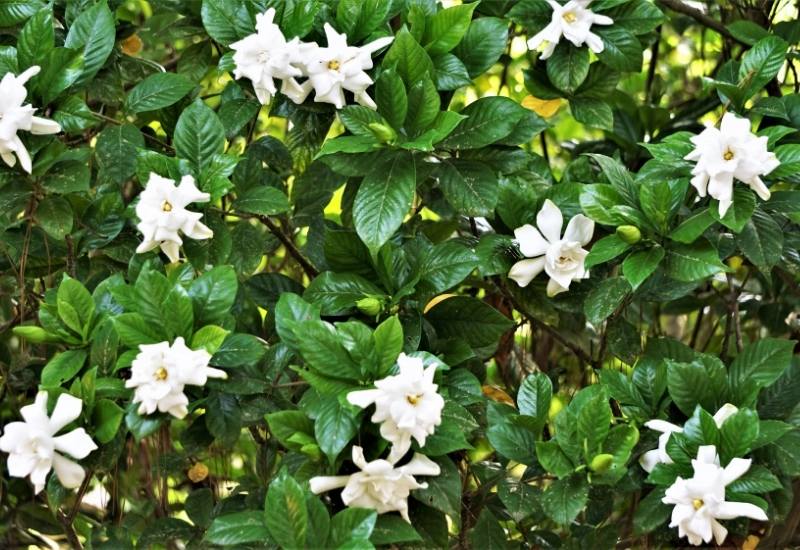
You need to water your gardenia regularly. The average a shrub of Gardenia jasminoides needs is 1 inch of water per week through the warm season, either from rain or hosing.
Reduce the watering progressively in late fall to winter, but always calculate rainfall.
Do not overwater though; this will cause lots of problems to your plant, from spider mites to root rot in very severe cases.
On the other hand, gardenias are not drought tolerant. If you leave for some time, get a neighbor or friend to water your delicate plant.
Gardenias Are Acidophilic Plants
Gardenias are very hard to grow because they need acidic soil. The pH should never exceed 6.5.
If it does, you will need to correct it, and we will see how you can do it later on. The optimal pH range is between 5.0 and 6.0.
When soil impoverishes, it also tends to become alkaline, so, feeding is essential. Which leads us straight into the next point.
Gardenias Need Regular Feeding
In full soil, give your gardenia abundant organic compost in spring and in summer, as it will need lots of nutrients for the vegetative (growing) and reproductive phase (blooming).
Don’t disturb the soil when you feed it. Just scatter the compost on the soil and allow it to filter into the earth, or be taken down by small animals and worms.
And yes, gardenias love worm rich soil! They also aerate the ground, and make it easy for the tender roots to grow and explore…
Do not fertilize in fall and winter. This will disturb its dormancy; even beautiful plants need a rest…
Indoors, use an organic acid based fertilizer with NPK of 3:1:3 or 3:1:2 and make sure that it’s rich in iron. Ideally, use a specific one for gardenias; there are plenty on the market because it is a popular plant.
Feed your gardenia every two weeks from spring to fall and cut down on your feeding regime to roughly once a month, when winter approaches.
You see, they are very particular about the maintenance you give them, but still, even if you do everything well, “things happen” and your gardenia’s leaves may turn from emerald to yellow… Why? And what can you do about it? Up next…
Why Gardenia Leaves Are Turning Yellow And What You Can Do About It
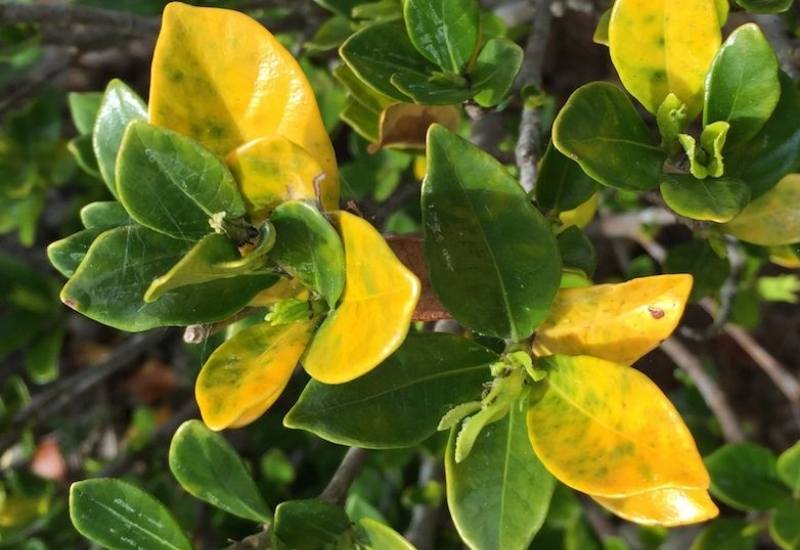
Gardenias with yellow leaves are not just less beautiful; they are sick! And there is always a cause; first we need to look at the reason, and once we have discovered it, we can find the solution and even think about prevention in some cases.
Some are connected, and we will see it soon. But now, let’s go through each possible scenario and look at the solutions.
Well, It Could Just Be Natural Aging
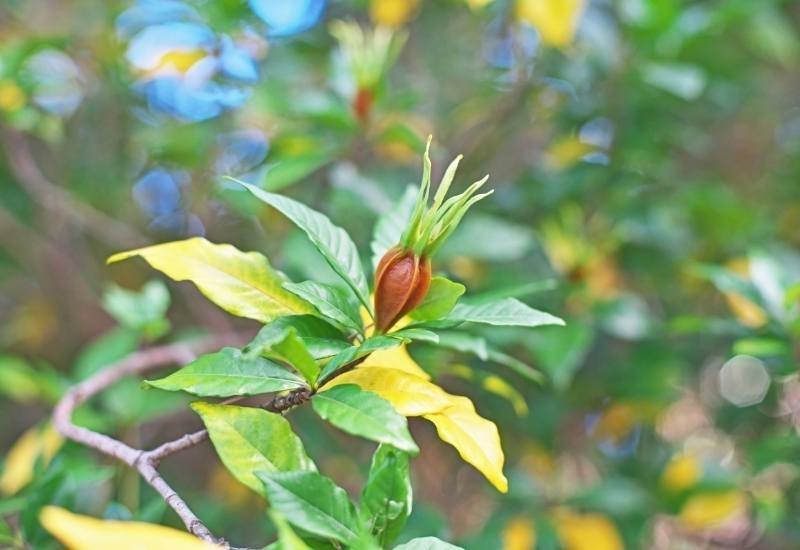
There is one natural exception to gardenia leaves turning yellow, and you should not worry about this.
Old gardenia leaves will simply turn yellow and drop. This can happen all year round though it tends to happen more often in fall and winter.
Simple, if you see that the odd leaf of your gardenia are turning yellow and it is not a new one, then you just don’t need to do anything. Allow it its natural course, though you can cut it for aesthetic reasons.
Now, on to the problematic cases…
Yellow Gardenia Leaves Due to Overwatering or Underwatering

Watering gardenias too much or too little is a mistake you should never make. In both cases you may see that the leaves turn yellow.
Don’t get me wrong; the odd excessive watering or the little delay won’t cause any problems. But if this is persistent and prolonged, the foliage of your shrub will suffer.
Overwatering will cause gardenia leaves to turn yellow, and then dark, mustard yellow, and eventually even brown.
The browning will start at the tips and progressively take over more and more of the leaf. This is really severe, and in fact your plant may even have root rot.
In case it is underwatering, the leaves will turn yellow but dry, and they will brown in patches, not as a constant progression from the tip of the leaf. It will also be light in color and, of course, dry. What can you do?
And if things get serious with overwatering…
Due to Root Rot
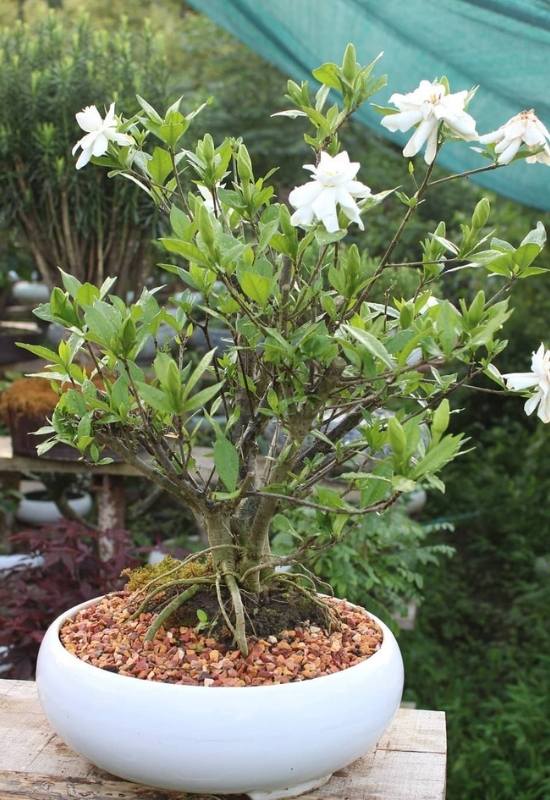
Root rot is a very, very serious problem indeed. You can even lose your plant, and it’s not a rare occurrence, it’s a very serious and probable outcome.
If the plant does not recover in two to three weeks, and even worse, if the rotted yellowing continues, and if it spreads to the branches… You need drastic action.
If the plant is still strong enough, it will survive. But root root can be lethal and in fact we have just seen the worst of all the problems. So, take a deep breath and let’s see more cases…
Does Not Have Proper Drainage
If drainage is poor, you will get similar effects to those of overwateing. So, check that the soil has enough sand, gravel etc. in it, if not…
And from underground to the sky… What happens if the light is wrong?
Excessive Light Can Cause Yellowing Leaves On Gardenia
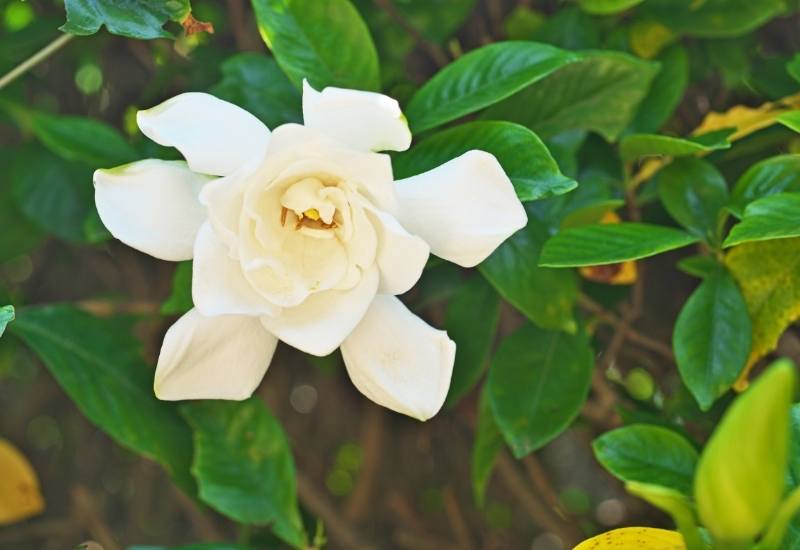
Even too much light can be a problem for your gardenia’s foliage, both outdoors and indoors. The leaves may turn yellow and dry, often accompanied by scorching in this case.
Remember that gardenias like sunlight when it’s fresh, but they prefer shade in the hot hours of the day. So, in case the plant is in your garden, and you can’t move it…
And if it is indoors…
That was easy… But how about the opposite problem?
Yellow Gardenia Leaves Due to Too Little Light
When the light is scarce the leaves will progressively lose color till they yellow. This is a much slower but more uniform phenomenon than with too much sunlight.
They will turn pale green at first, losing that dark sheen they have when they are healthy.
Then, the green will turn to yellow, and at this stage, the leaf may be lost forever. It will also tend to affect all the leaves together, or most of them, or all those on one side of the shrub.
In case it’s indoors…
In case it’s outdoor…
Your Gardenia Got Too Cold
Gardenias fare better at very moderate temperatures: during the day, 65 to 70oF (18 to 21oC) while at night, 60 to 65oF (15 to 18o C).
Any prolonged periods under these may cause leaf yellowing and then dropping.
What can you do if the weather is cooler than expected?
Of the basic needs of plants, food is very important, and in fact…
Nutrient Deficiency Is A Common Cause Of Leaf Yellowing In Gardenias
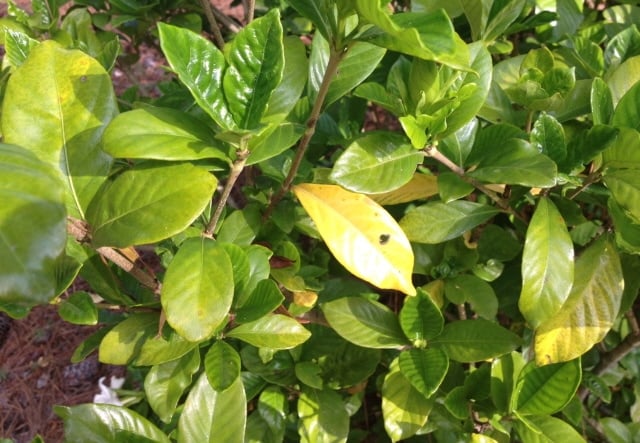
Yellow patches, maybe accompanied by misshapen leaves, some brown dots etc. are a matter of nutrient deficiency in many cases.
This can have two causes; the first we will look at now, the second later on: poor feeding and high soil pH.
Poor feeding usually happens when the plant is in a pot, or when you use wrong fertilizers, even if organic.
The reason is that these feed the plant but not the soil. Organic matter like compost on the other hand will feed the soil, and this will usually give your gardenia all the food it needs.
You can see that there are very detailed symptoms, but don’t hurry to give them exact minerals yet! There are much simpler and easier ways!
As a general rule, try to have a healthy and living soil, using leaves, compost, worms, avoiding chemicals at all costs.
Make sure that it’s not compacted and make sure that it has thriving organisms in it. With conditions like these, the soil will give the right nutrients for your plant.
But sometimes we can’t do this; you may have pollution from a neighboring garden or street. You may have a small plot of land…
So…
How? Read on and you will find out.
High Soil pH
As a acid-loving plant gardenia grow best in soil with a pH of 5.0 to 6.0. but when the pH goes past 6.5, gardenia leaves will become yellow (chlorotic) due to iron deficiency caused by alkaline soils.
Let me tell you why, because it is connected with the previous section…
Wrong pH causes malnutrition in plants. They eat too much of some nutrients and too little of others!
Each pH level increases the absorption of certain nutrients and decreases that of others. The result is that the plant won’t get the exact balance of nutrients that it needs, as is shown in this picture.
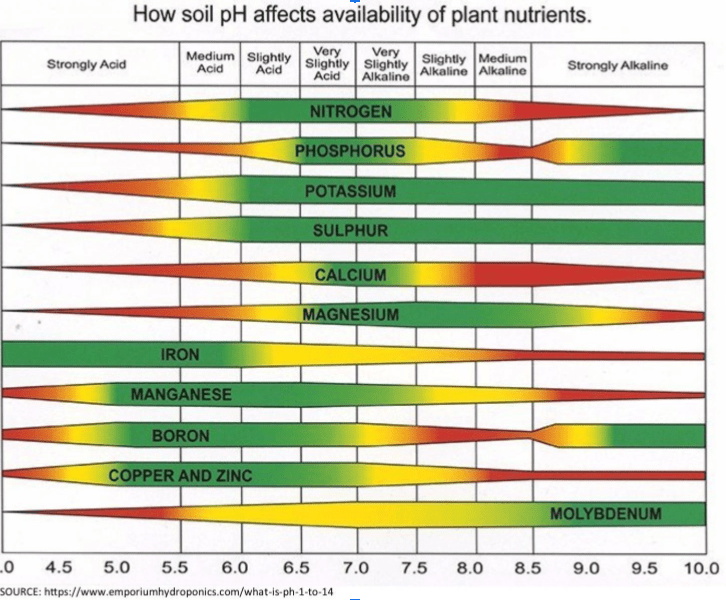
This has nothing to do with how much of each nutrient they have in the soil. So, if you fertilize with the right balance, you won’t get any results if the problem is the acidity.
The roots of plants absorb more or less of each individual nutrient according to how low or high the pH is.
So, if the pH is too high, you need to correct the soil’s acidity. Do this also as prevention,
especially if your soil is naturally in the neutral or alkaline range; even if you use acidic soil for your acidophilic plants, it will automatically tend to revert back to the original pH.
But how?
Feeding gardenias may be more fun than you thought!
It is a large scale and demanding operation, but it is worthwhile if you have unsuitable soil and you really want a gardenia. In fact it’s what professional gardeners do in parks with alkaline soil.
Gardenia Leaves Turning Yellow: Problem Solved!
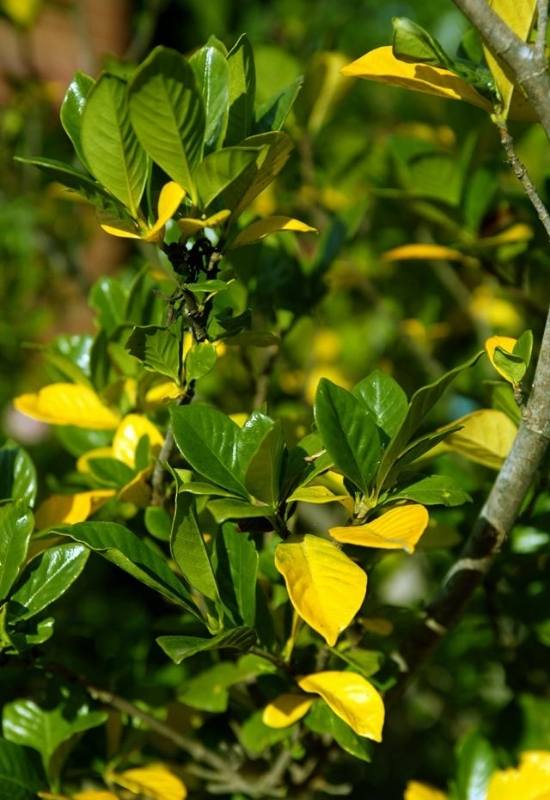
Yellow leaves on gardenias look bad and they can be a health problem. Sometimes it is not too serious and you can find an easy solution for it.
Other times it can be life threatening for your shrub, and you need to act fast and even drastically. On the other hand, some solutions are cheap and even fun, so, well, now you know them too.
The good news is that whichever is the cause, there is a solution and we have written the all round, complete and ultimate guide to curing gardenias whose leaves are turning yellow for you.
It’s all here, in this article, laid out plain and simple but in detail for you. Earmark this page, because if you have a gardenia the chances are that you will come back again!

Written By
Adriano Bulla
After many years as an academic in London, Adriano Bulla became a writer, publishing books like A History of Gardening, Organic Gardening and Elements of Garden Design; he then decided to become a gardener, following his childhood dream, and has been following his dream writing and gardening professionally in Southern Europe, where he has specialized in new and innovative organic gardening fields and techniques, like permaculture, regenerative agriculture, food forests and hydroponics.

This site is interesting but confusing. There are too many options to chose from and not enough information on how to solve the problem!
Extremely informative. Was looking for this exact information. Thanks!!
Didn’t know gardenias needed iron. My gardenia is beautiful since I added iron. Sometimes I add epsom salts when I do not have iron and it seems to be growing well. This year I had 40 flowers at one time!
What kind of iron?
Wish I could send pic. These r new shrubs. And looked great u til
A few days ago. From
The article I believe it is nutrients